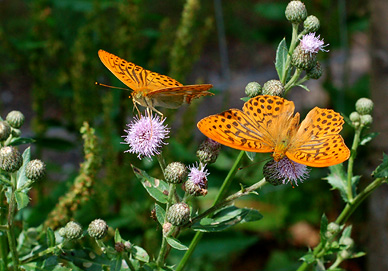| Photoproject
"Silverwashed" |
|
Silver-washed Fritillary (Argynnis
paphia)
|
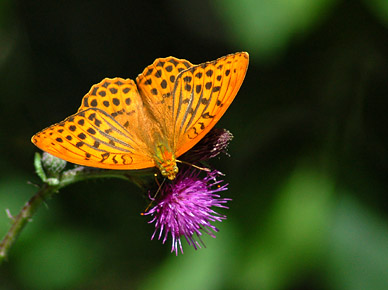 |
|
There are some butterflies
that I always photograph, when I meet them. The Silverwashed Fritillary
and the Comma are two of them.
|
| |
Maybe
its because both species keep changing their colours in the light and always
look so different. Newly hatched Silverwashed Fritillaries glow in brilliant
orange colours and are unbelievably beautiful when they cross a sunny slope
with a dark conifer forest in the background. |
| |
The
Silverwashed Fritillary to the left is captured with a 300 mm tele, Aperture
7 and shutter 1/1200. ISO settings were 400, and that was too much. I forgot
to set it back after having photographed Poplar Admirals in the shadows
of the forest. |
|
Silverwashed
Fritillary male, Øland, Sweden, Juli 2006
|
|
|
  |
| An
easy Motive |
|
|
|
The Silverwashed Fritillary
is easy to photograph for several reasons: It flies in the midday sun,
and it flies in fair camera hight. When resting it often opens its vings
in a perfect 180 degree plane, so its possible to place DOF so that everything
is kept in focus. Blues and hairstreaks won´t do so. Being relatively
common and widespread and often very numerous at forest roads or clearings
with thistles makes the Silverwashed an easy prey for the Photographer.
|
|
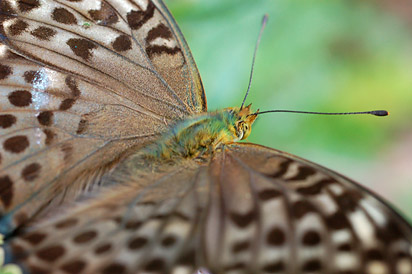 |
|
When it is sucking
nectar it is not very shy, and you can get very close with the lens. Really
close, so that the lens touches the butterfly.
|
| It
is a special experience to stand among hundreds of Silverwashed Fritillaries
hanging from, or flapping between headhigh thistles in a forrest clearing. |
| The
Silverwashed Fritillary to the right has not been cropped. I was close.
I think the 50 mm makro lens touched it. |
| |
| |
Female forma valesina, Holmegård July 2006. 3008 pix -->412,
|
  |
| Habitate |
 |
|
The Silverwashed Fritillary
is widespred in forests in Sjælland and the southern islands. It
has become rare in Jylland for unknown reasons.
|
| |
Being
found many places does not mean it is always numerous. Often you only see
one or a few, while you in some place can count them in hundreds or even
thousands. |
| |
Roden
skov, Mellemskoven, Hannenov and the forests around Maribo are such "Silverwashed
woods" |
| |
Anyhow,
the best place to photograph the Silverwashed Fritillary is at Høvblegen,
Møn, though it is not very numerous there. |
| |
The hills are facing southwards to the sea and you get a couple of A stops
donated by the incoming reflected light from the sea. Futhermore the soil
is calchine and many places the white chalk ground can be seen between the
thin vegetation cover and reflections from the white spots softens up shadows
from the sun. Extra light is always appreaciated by the Photograph.
|
| |
|
|
View
of the Baltic from Høvblege Bakker, Møn
|
  |
| Male,
Female, Upperside, Underside and "Splendour". |
| The
Male |
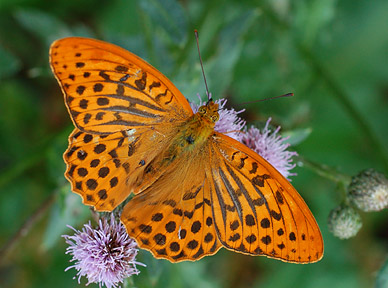 |
|
It
can be interesting to photograph butterflies with bites from birds beaks
or tears from thistles. They tell stories of accidents and lifestyles. |
| |
But
for the collection of butterfly portraits, you are better off by photographing
newly hatched specimens. Their colours are brighter and the contrasts are
clearer. That makes them better for identification purposes, which is much
of the intent of the portrait photo. |
| |
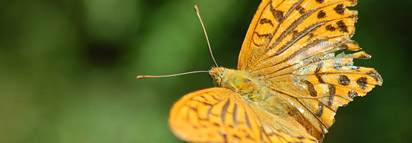 |
|
Newly
hatched Male, Holmegård July 2006.
|
|
Torn and wornout Male, Høvblegen August 2006.
|
  |
|
Underside
|
|
|
| Mmany
butterflies are easier to photograph from the underside than the upperside.
Its the opposite with The Silverwashed Fritillary. it often rests with its
wings wide open. An exception makes bad or overcast weather. Then it settles
in the trees, often out of reach of the telephoto lens and hard to spot
by the eye. |
|
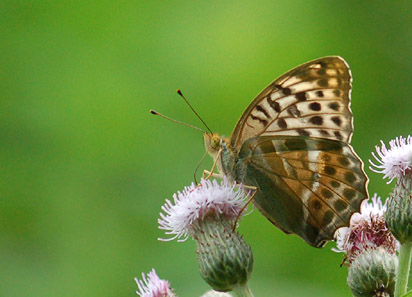 |
| Of
course you can lay down on your back under a thistle and take the underside
against the blue sky, or you can click series from the side when it flaps
the wings. |
|
The underside of the valesina to the right, is from such a series. The picture
is taken against the light and does not show the features of the underside
well enough to be a proper "Underside Portrait" |
| |
| |
| |
| |
|
Kejserkåbe
hun f valesina, Holmegård Juli 2006.
|
  |
| The
female |
|
|
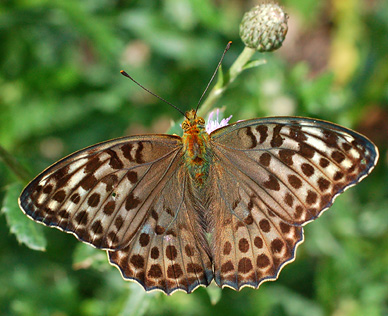 |
|
|
| |
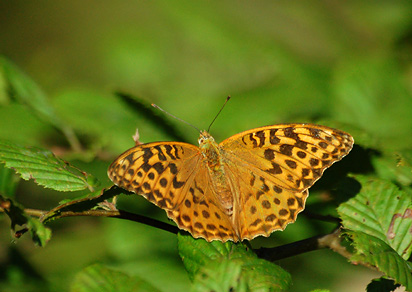 |
|
Female
forma valesina, Holmegård July 2006.
|
|
Female
normal form , Alsace France July 2006.
|
| |
  |
| "Splendour" |
|
|
|
|
|
Now we can tell a
story: Once upon a time there were two Silverwashed Fritillaries, they
were brothers: "Do you dare this?" asked the first brother:
"Take care, you will crash to the ground!" the second brother
replied.
|
| |
If
you can project your anticipations into the photo it talks to you and
probably also to other people.
|
| |
Now,
all the thistles on this photo complicates the composition and distracts
the viewer. Perhaps we could make the photo more interesting by stepping
closer? |
| |
|
| |
|
| |
|
|
Males,
Holmegård July 2006.
|
|
|
  |
| Close
to two |
|
|
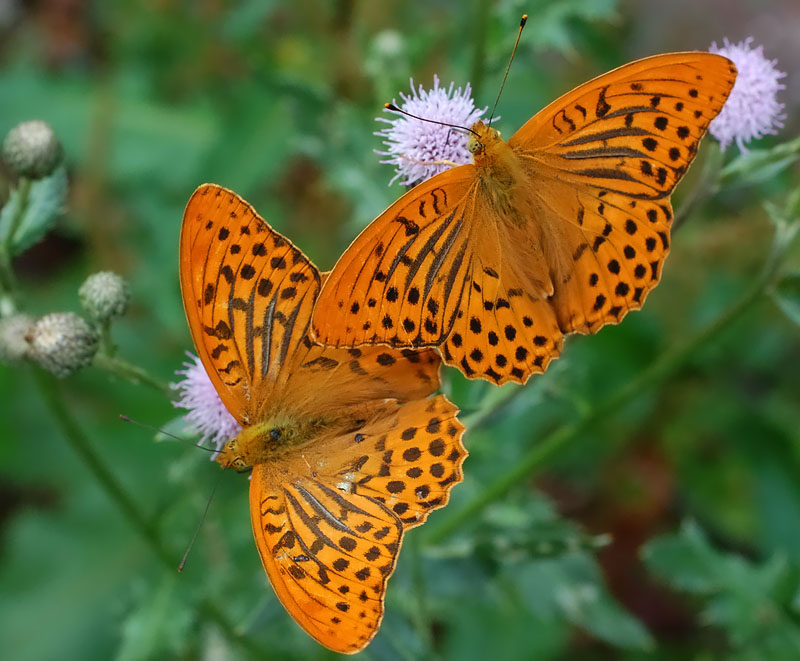 |
| This
looks good, doesnt it? But they do not sit well, and the composition is
confused as the heads of the butterflies lead the eye out of the photo in
either side. But now I know what to capture next time, I meet them: Two
or more Silverwashed Fritillaries with their heads pointing towards the
camera or towards the same point in the composition. I would also like the
background darker and with some blue colours. |
| |
| |
|
|








